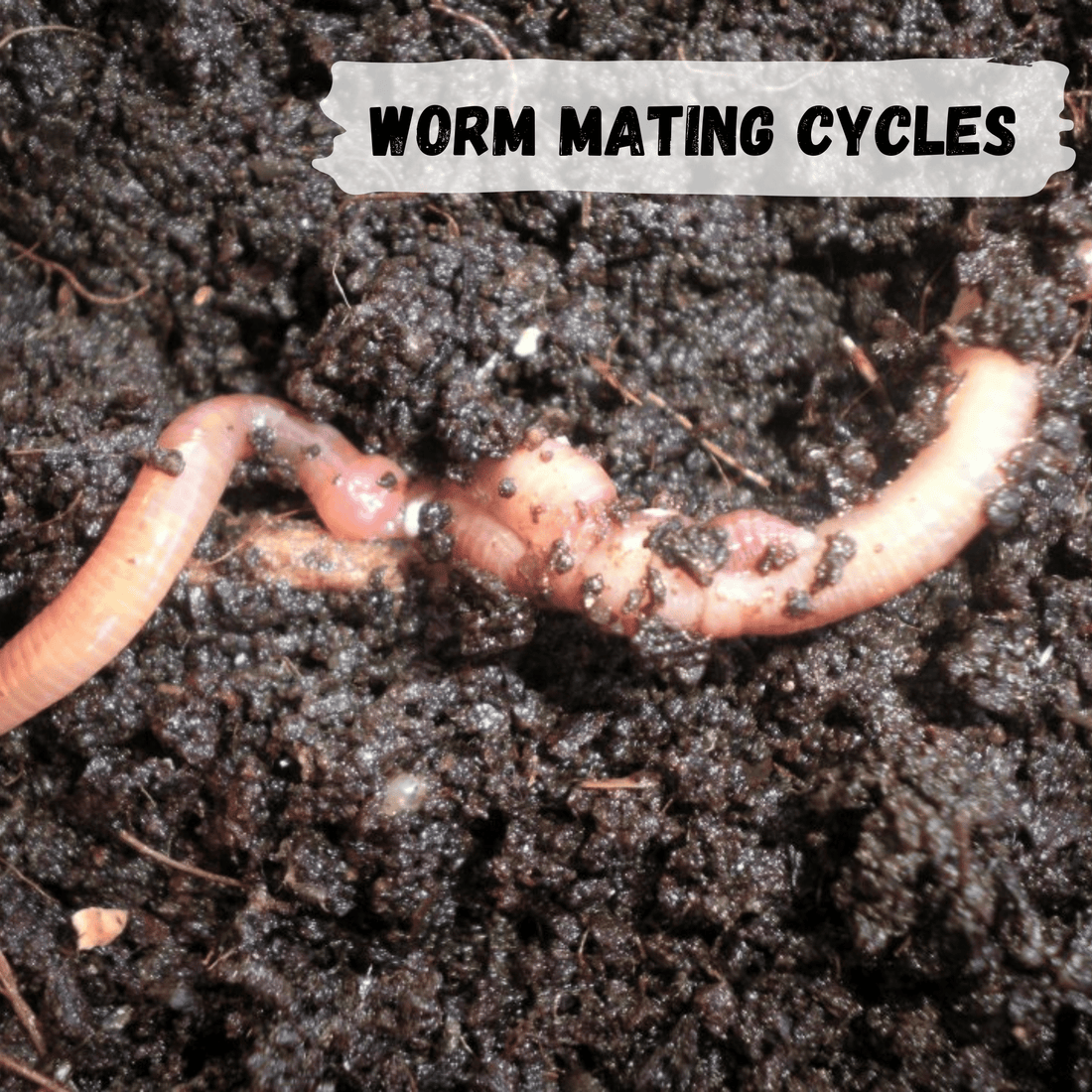
The red wiggler worm is undeniably the best worm to help you achieve your vermicomposting dreams. One of the biggest reasons red wigglers are ideal for a worm bin is their propensity to reproduce.
A unique, reproductive characteristic all worms share is that they are hermaphroditic, meaning, they have both male and female reproductive organs. Worms reproduce when eggs from one worm are fertilized with the sperm from their mate. Worms exchange sperm, which is later used to fertilize their eggs.
Before we go any further you may be asking… why should I care about the reproduction of my worms? The answer is simple, so you don’t inadvertently disrupt the cycle and prevent your worm population from growing.
Cocoon Development
If you are new to vermicomposting, it is important to learn to recognize this key component of the worm’s reproduction cycle, so you don’t accidentally remove them when harvesting worm castings.
Reproductive Rate

Red wigglers can be purchased in varying quantities at various price points. Some retailers sell them by weight and others by quantity. For instance, 250 worms weigh about ½ a pound while 1,000 worms weigh closer to one pound.
For use with the Worm Bucket Indoor Composting Kit that we designed and sell, we recommend 250 worms and we ship them directly from our preferred Red Wiggler Worm Farm: Meme's Worms.
When first establishing your worm bin, it may be more cost-effective to start with a smaller quantity of red wigglers. However, with the right environment in your bin, there is no reason why your worm population shouldn’t start growing in just a matter of months.
Your goal as a worm farmer should be to encourage reproduction, but how?
Environmental Factors
The most important variable for successful worm reproduction is the environment, more specifically: moisture, temperature, food, and bedding.
Finding the right moisture balance can be challenging for first-time vermicomposters. It’s important to keep in mind the natural qualities of the subterranean environment we are trying to simulate. The substrate should be damp and retain moisture but not so wet that liquid pools at the bottom of your bin, which could lead to foul odor and even worm death. (Our Worm Bucket has drainage holes and the perlite acts as a filter to keep moisture levels correct)
Conversely, your bin also should not be too dry. Worms are unique little creatures as they actually breathe through their skin. Moisture in their environment is critical not only to facilitate movement but also for respiration.
Food and bedding are two more environmental variables that play a big role in moisture levels and retention. Worm farmers need to regularly assess the water content of the food they are adding to the bin and balance that with how much moisture the bedding retains. The carbon to nitrogen ratio is a key component to helping maintain balance in your worm bin.
Reproductive Rates
Now that we know how worms reproduce and the importance of the environment, how quickly can we expect to see signs of population growth?
In optimal conditions, on average, red wigglers can produce three cocoons per week. Each cocoon can contain three worm hatchlings. With some quick worm math, that means one worm is capable of producing about 40 offspring every month. Those are some impressive stats! Since it only takes 85-149 days for a worm to reach sexual maturity, you can just imagine how quickly your worm bin will the thriving with vermicomposters.

A final note about worm reproduction, it’s self-regulated! That’s right. Red wigglers will naturally slow down reproduction as the population nears capacity for the space or available resources. If you just focus on providing your worms with the best environment with the optimal combination of moisture, temperature, food, bedding - your red wiggler friends will handle the rest.
If you're ready to start your own Worm Composting Bin, we suggest our Worm Bucket as it's very simple for beginners and comes with everything you need to get started in the kit. Add on a 1/4 lb of worms from our Worm Vendor Meme's Worms and you'll be an A+ Worm Farmer in no time!

